
|
|
|
|
|
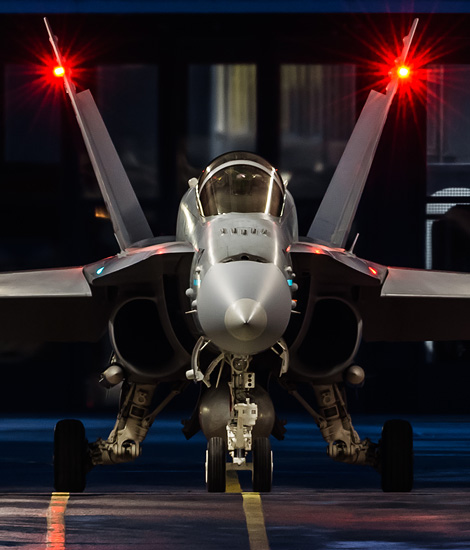
|
CAP Operations During the WEF; Meiringen, January 25 & 26, 2018
The Suisse Quick Reaction Alert, part 3; Text and Photograph’s by Alex van Noye
During the World Economic Forum two fighter planes from Meiringen are continuously in the air for a CAP mission. These aircraft usually consist of two F/A-18C Hornets which are all armed with live weapons like air to air missiles. Also in the darkness the F/A-18’s are used to fly these CAP missions until maximum 10 pm.
The day on Meiringen during the WEF starts just like all other days at the airbase. The runway is swept by the cleaning crew and the runway and taxi tracks are thoroughly inspected. Around half past eight the first aircraft will be launched during the WEF. A yellow mobile control tower is located along the head of the runway. At the position of this car, one can see which runway direction is in use. The flight direction is sometimes several times a day changed at Meiringen, because the wind can sometimes be very variable in direction due to the mountains. At the end of the runway, the Barrier is set up which can be used during emergency landings. At the beginning of the day usually two F/A-18s which will operate from the QRA shelters at the head of the runway at Meiringen will be scrambled. Both aircraft are scrambled and will take off as soon as possible for their WEF mission. In addition to the operational aspect other aspects are also simulated; in this way pilots of the air force are always prepared. The start-up and taxiing out of the aircraft will take place in a period of maximum ten minutes. The F/A-18s which fly CAP missions armed with live weapons under the wings. These weapons consist of two AIM-120 AMRAAM radar-guided medium-range missiles at the intake suspension points and two AIM-9 Sidewinder heat-guided short-range missiles on the wingtips. Under the fuselage of the Hornets is a large fuel tank positioned with the text STBY 121.50. This text is the frequency at which the air traffic controls and the Swiss emergency service is accessible to the aircraft being intercepted. This frequency is monitored in Switzerland 24 hours a day to send any emergency call to the emergency services.
All fighters which are taking off at Meiringen leave with full afterburner, because the runway at this airfield is only 2250 meters long. There are from the first QRA mission in the morning all day long continuous four fighter planes in the air. Groups of two Hornets and two Tigers depart every time for a WEF mission. Only after the departure
|
|
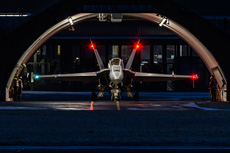
|
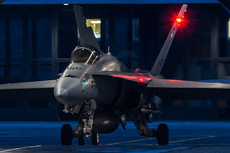
|
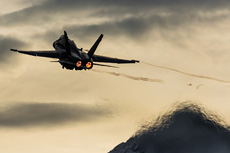
|
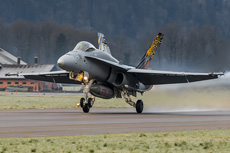
|
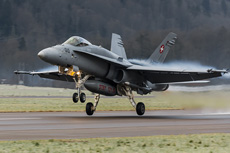
|
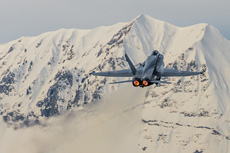
|
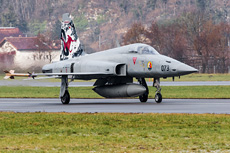
|
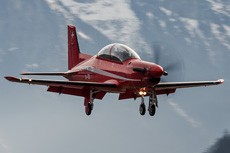
|
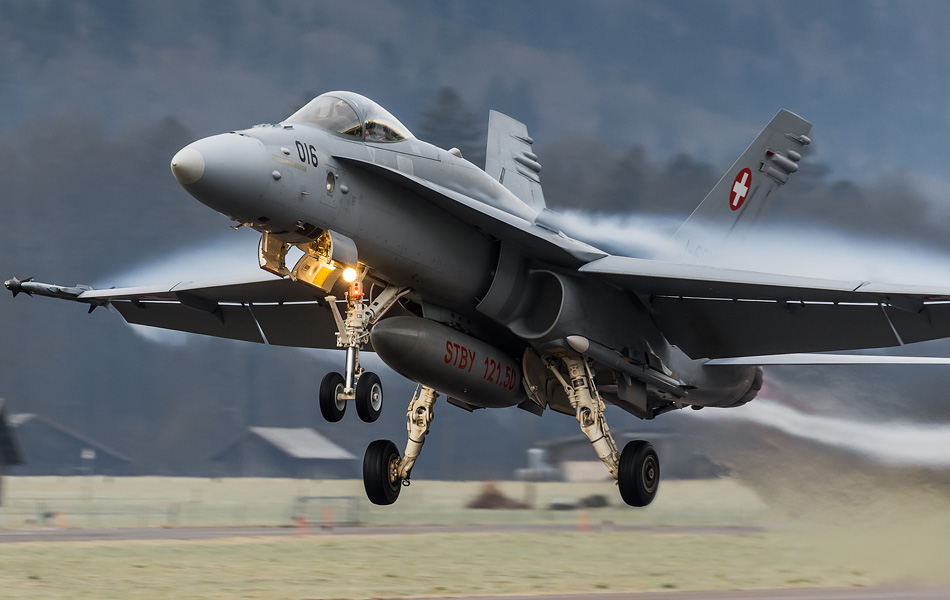
|
of the next wave, the first aircraft of the previous wave will return to Meiringen. This pattern repeats itself every hour, because an average WEF mission takes about one hour. The F/A-18s fly from the QRA shelters only during the QRA scramble in the morning. The rest of the day, the Tigers will make use of these shelters. The F/A-18s are flying all day from the cavern in the caves on the south side of the airbase Meiringen. During startup of the aircraft sounds therefore the characteristic sound of a starting F/A-18 from the air ducts in the mountains. The size and layout of the caverns at Meiringen is a military secret. Switzerland generally has an open air base policy, which means that they have no secrets on the base. However, the caverns that are an important link in the defense of the airbase and the protection of the air base are a secret. The aircraft taxi directly from the caverns to the platform where they cross a public road. This is quite a long taxi for the Hornets. After Checking the Hornets they are ready for departure; this check is done on the platform next to the control tower.
During the whole year, only F/A-18 Hornets fly at this airfield and these aircraft are flown by professional pilots of the Swiss Air Force. After the aircraft have been prepared for their mission, they both will take-off in a very short time. With full afterburner and a lot of noise, the Hornets leave for a CAP mission. The road which is crossing the runway at Meiringen will be closed by a barrier when aircraft are taking off or landing. The control tower of Meiringen has an orange flashing light which will blink when the barriers goes down. At the end of the runway to the west of the airfield is also a road over the airbase. The gates of this road remain closed during the entire flight time, because they have no insight into this place from the tower. Only at the end of the flying day this road opens again. When the aircraft return from their WEF mission, they immediately taxi after landing to the platform next to the control tower. On this platform the weapon specialists are waiting for the aircraft. These people put the pins back in the missiles to unarm these weapons. The missiles are deactivated with these pins so that they can no longer be fired. After this action the two Hornets taxi back to the cavern in the mountains. The pilots can then start the debriefing of their mission which they have flown.
During the evening two F/A-18s leave per hour. The night patrols will be flown until after 10 pm. After this time there are no longer active flights at Meiringen during the WEF. On the ground, however, are two Hornets non-stop ready to respond to a QRA call. At the moment the Swiss Air Force is not yet fully equipped for a 24/7 QRA service. The F/A-18 is an aircraft which is able to perform in all weather conditions. Also night operations in a mountainous area are not a problem for the Hornet. The pilots of the F/A-18 are equipped with night vision equipment allowing it to fly in the dark becomes a lot easier. The F/A-18 has for the visibility on the ground not only the nose wheel lighting as a tool. Alongside this strong light, the F/A-18 has at various locations on the fuselage, tail and wings reflective strips. These strips can also be active illuminated in the dark; the strips then colors in turquoise light. This type of lighting is a system designed for the US Navy for the visibility of aircraft on aircraft carriers. These strips can be activated in a formation flight, because the light is not intense. The Hornets fly in pairs during the missions making this system a good safety tool. The system is an ideal tool for the Hornet pilots. In the dark, the same procedures are usually used as during the day. This means that two aircraft are still being launched every hour. The aircraft depart due to safety regulations with a slightly larger interval than during the day. The second aircraft holds about 5 to 10 seconds longer than in daylight. After take-off, the Hornets will fly their WEF mission in a formation. The last aircraft land at Meiringen after 10 pm.
|
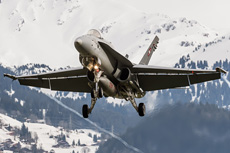
|
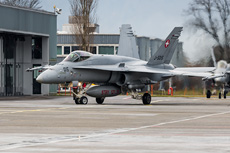
|
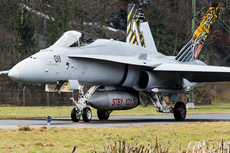
|
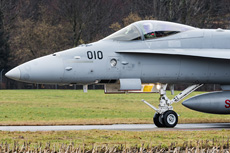
|
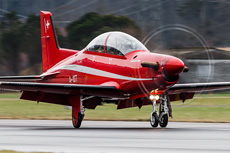
|
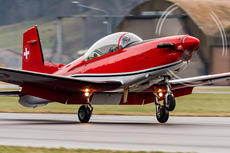
|
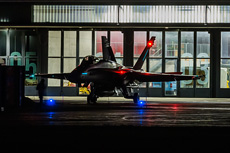
|
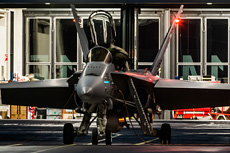
|
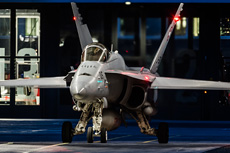
|
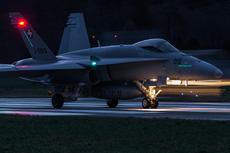
|
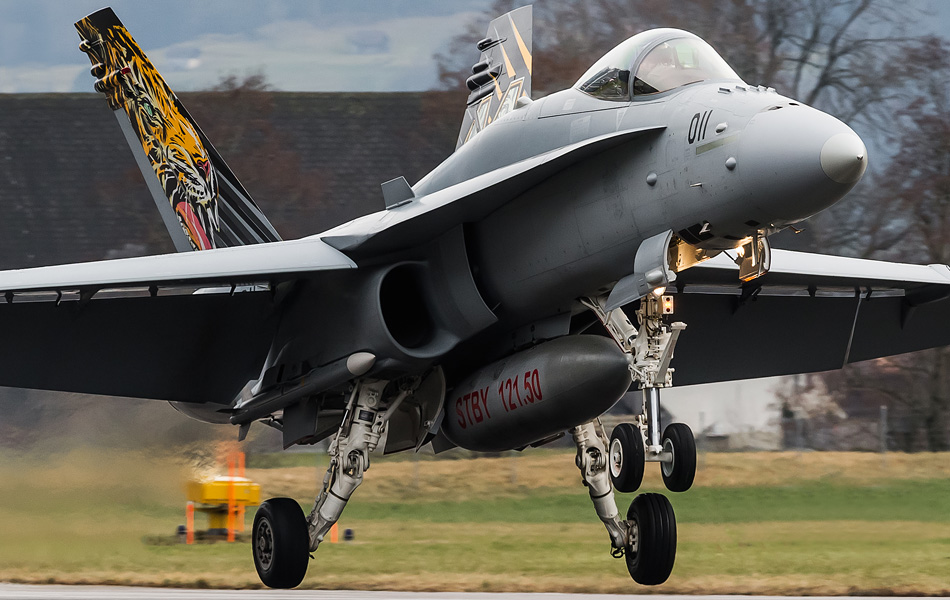
|
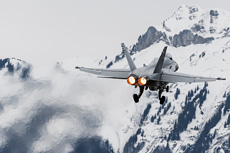
|
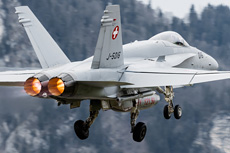
|
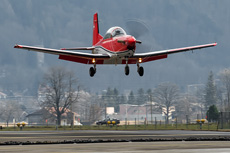
|
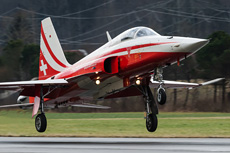
|
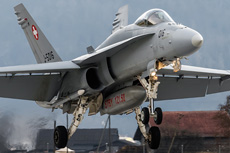
|
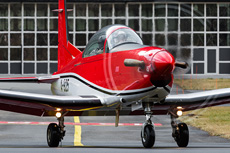
|
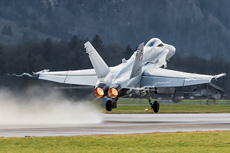
|
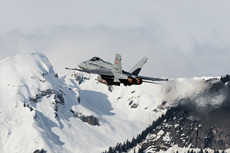
|
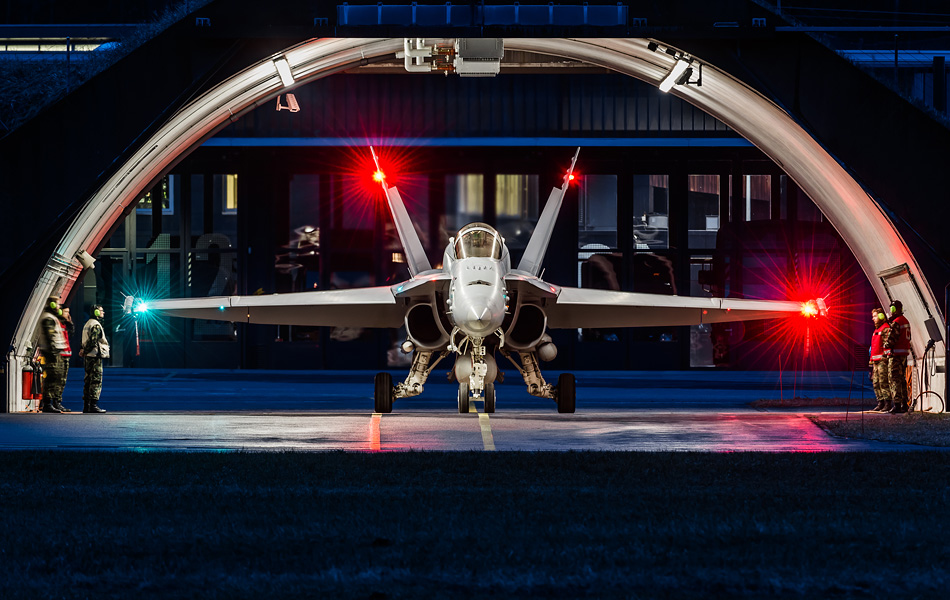
|
|
|

|







